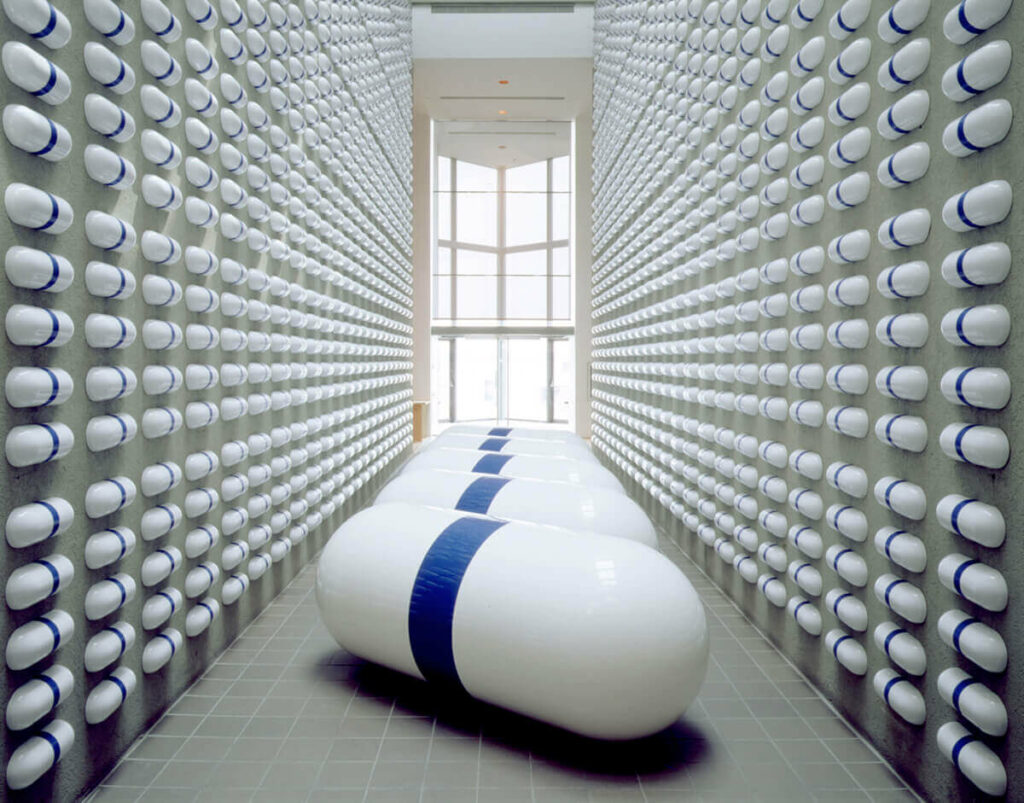This installation brings the challenges of living with HIV to the fore. Approved in 1987, AZT was the first drug in the United States to treat those with HIV and delay the onset of AIDS. AZT had significant side effects and was extremely toxic. Initial doses of the medication were quite high, and patients took the pills on a strict schedule throughout the day. AA Bronson noted the personal significance of the work, as Felix Partz and Jorge Zontal were diagnosed with HIV in 1989 and 1990, respectively: “Our life was full of pills, our apartment was full of pills … so they became part of our work,” he said. Here, the artists have created plastic capsules that represent the antiretroviral drug AZT (azidothymidine). The installation is comprised of 1,825 pills, corresponding to the exact amount of Partz’s annual dosage.
One Year of AZT is usually exhibited together with the work One Day of AZT, 1991, which features five large pills, a daily dosage of the drug. The Fiberglas pills in One Day of AZT are on a monumental scale; each is slightly larger than a body, alluding to coffins.
